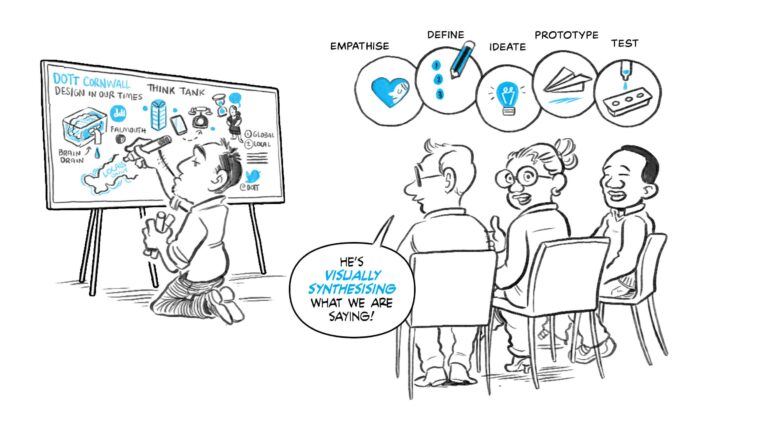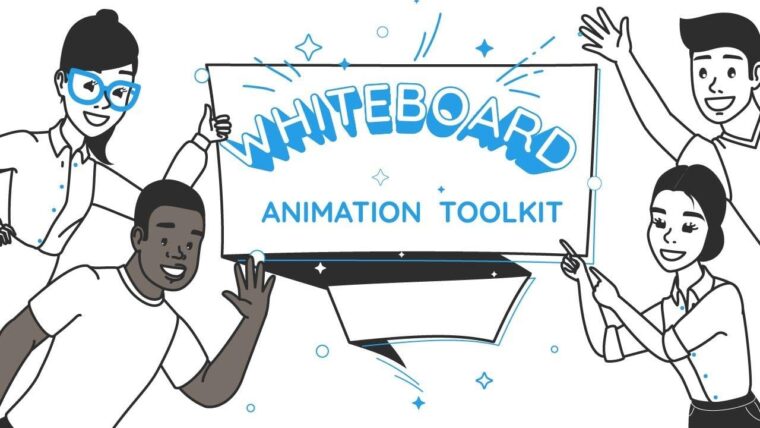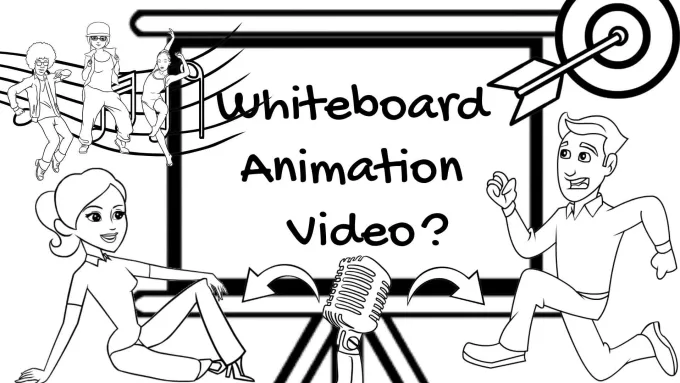Whiteboard animation is a type of video that uses hand-drawn objects, figures, and typography on plain backdrops to communicate ideas and explain complicated concepts: https://astra-motion.com/services/explainer-video/.
Many animators also use a very limited color palette for extra emphasis on the most important narration points. To further the impression that the audience is witnessing the plot evolve, several animators use a sketching hand.
A dive into whiteboard animation history

Finding the very first whiteboard animation video is essentially impossible. However, it’s quite easy to identify the first one that became actually effective. There were nine whiteboard animations of a man sketching on a whiteboard produced by UPS in 2007. These were simple whiteboard videos that explained different logistics concepts in a short and comprehensive way.
It cost UPS around $35 million to produce just these nine whiteboard films ‒ the company had such a very strong belief in the value of simple and accessible explanations.
It ended up being a wise investment as the videos that were called “addictive” quickly boosted brand recognition and significantly improved sales. Additionally, they nearly single-handedly launched the never-ending trend for whiteboard videos.
Benefits of whiteboard animation for business
Whiteboard videos are a go-to marketing strategy for businesses of all sizes because they actually work.
So, what are the main advantages?

Clarity. You can convey complicated issues using a straightforward graphic approach with whiteboard animation. It transforms potentially boring information into captivating videos.
Giving life to metaphors. The audience sees you make direct parallels between a known and novel object. Abstract subjects are transformed into engaging pictures by using simple lines and motion.
Providing context and depth. Any visual style may be used to convey graphs, charts, and statistics, but whiteboard animation is especially effective at making these visuals seem approachable. The straightforward design turns stats into lively visual assistance.
It’s challenging to create a film that stands out in a world full of bright lighting, spectacular special effects, and blockbuster blockbusters. Whiteboards capture the attention for two different reasons.
First, they stand out among more congested forms because of their plain backdrops and straightforward design. Second, it never became predictable even at the height of the technique’s popularity.
Who might need a whiteboard animation?

About every field has plenty of whiteboard animation examples available. You can make use of this technology to promote health-related messages, simplify complicated financial concepts for casual observers to understand, or assist a food company in launching a new type of product.
Whiteboard animation is effective throughout economy sectors, but it truly shines in a few industries where you can illustrate relations, tell a good story, explain a certain process, or explain a difficult metaphor. If you work in EdTech, finances, public health, or IT, whiteboard animation is your best choice for these purposes.
What is Whiteboard Animation? A Quick Guide For Business
Whiteboard animation is a type of video that uses hand-drawn objects, figures, and typography on plain backdrops to communicate ideas and explain complicated concepts: https://astra-motion.com/services/explainer-video/. Many animators also use a very limited color palette for extra emphasis on the most important narration points. To further the impression that the audience is witnessing the plot evolve, several animators use a sketching hand.
A dive into whiteboard animation history
Finding the very first whiteboard animation video is essentially impossible. However, it’s quite easy to identify the first one that became actually effective. There were nine whiteboard animations of a man sketching on a whiteboard produced by UPS in 2007. These were simple whiteboard videos that explained different logistics concepts in a short and comprehensive way.
It cost UPS around $35 million to produce just these nine whiteboard films ‒ the company had such a very strong belief in the value of simple and accessible explanations.
It ended up being a wise investment as the videos that were called “addictive” quickly boosted brand recognition and significantly improved sales. Additionally, they nearly single-handedly launched the never-ending trend for whiteboard videos.
Benefits of whiteboard animation for business
Whiteboard videos are a go-to marketing strategy for businesses of all sizes because they actually work.
So, what are the main advantages?

Clarity. You can convey complicated issues using a straightforward graphic approach with whiteboard animation. It transforms potentially boring information into captivating videos.
Giving life to metaphors. The audience sees you make direct parallels between a known and novel object. Abstract subjects are transformed into engaging pictures by using simple lines and motion.
Providing context and depth. Any visual style may be used to convey graphs, charts, and statistics, but whiteboard animation is especially effective at making these visuals seem approachable. The straightforward design turns stats into lively visual assistance.
It’s challenging to create a film that stands out in a world full of bright lighting, spectacular special effects, and blockbuster blockbusters. Whiteboards capture the attention for two different reasons.
First, they stand out among more congested forms because of their plain backdrops and straightforward design. Second, it never became predictable even at the height of the technique’s popularity.
Who might need a whiteboard animation?
About every field has plenty of whiteboard animation examples available. You can make use of this technology to promote health-related messages, simplify complicated financial concepts for casual observers to understand, or assist a food company in launching a new type of product.
Whiteboard animation is effective throughout economy sectors, but it truly shines in a few industries where you can illustrate relations, tell a good story, explain a certain process, or explain a difficult metaphor. If you work in EdTech, finances, public health, or IT, whiteboard animation is your best choice for these purposes.
